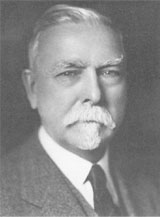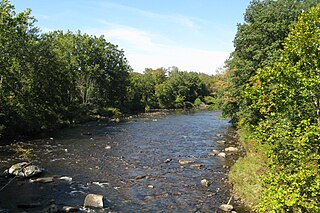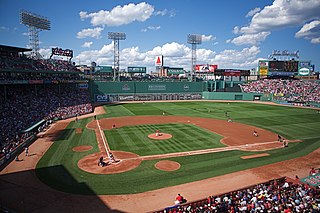
Lawrence is a city in Essex County, Massachusetts, United States, on the Merrimack River. As of the 2010 census, the city had a population of 76,377, which had risen to an estimated 78,197 as of 2014. Surrounding communities include Methuen to the north, Andover to the southwest, and North Andover to the southeast. Lawrence and Salem were the county seats of Essex County, until the Commonwealth abolished county government in 1999. Lawrence is part of the Merrimack Valley.

Agawam is a city in Hampden County, Massachusetts, United States. The population was 28,438 at the 2010 census. Agawam sits on the western side of the Connecticut River, directly across from Springfield, Massachusetts. It is considered part of the Springfield Metropolitan Statistical Area, which is contiguous with the Knowledge Corridor area, the 2nd largest metropolitan area in New England. Agawam contains a subsection, Feeding Hills.

Chicopee is a city located on the Connecticut River in Hampden County, Massachusetts, United States of America. It is part of the Springfield, Massachusetts Metropolitan Statistical Area. As of the 2010 census, the city had a population of 55,298, making it the second largest city in Western Massachusetts after Springfield. The current mayor is Richard Kos.

Holyoke is a city in Hampden County, Massachusetts, United States, that lies between the western bank of the Connecticut River and the Mount Tom Range. As of the 2010 census, the city had a population of 39,880. As of 2017, the estimated population was 40,341. Sitting 8 miles (13 km) north of Springfield, Holyoke is part of the Springfield Metropolitan Area, one of the two distinct metropolitan areas in Massachusetts.

Ludlow is a New England town in Hampden County, Massachusetts, United States. The population was 21,103 as of the 2010 census, and it is considered part of the Springfield Metropolitan Statistical Area. Located just northeast of Springfield across the Chicopee River, it is one of the city's suburbs. It has a sizable and visible Portuguese and Polish community.

Russell is a town in Hampden County, Massachusetts, United States. The population was 1,775 at the 2010 census. It is part of the Springfield, Massachusetts Metropolitan Statistical Area.

The city of Northampton is the county seat of Hampshire County, Massachusetts, United States. As of the 2010 census, the population of Northampton was 28,549.

Lowell is a city in the U.S. Commonwealth of Massachusetts. Located in Middlesex County, Lowell was a county seat until Massachusetts disbanded county government in 1999. With an estimated population of 109,945 in 2014, it is the fourth-largest city in Massachusetts, and the second-largest in the Boston metropolitan statistical area. The city is also part of a smaller Massachusetts statistical area called Greater Lowell, as well as New England's Merrimack Valley region.

Bellows Falls is an incorporated village located in the town of Rockingham in Windham County, Vermont, United States. The population was 3,165 at the 2000 census. Bellows Falls is home to the Green Mountain Railroad, a heritage railroad; the annual Roots on the River Festival; and the No Film Film Festival.

The Connecticut River is the longest river in the New England region of the United States, flowing roughly southward for 406 miles (653 km) through four states. It rises at the U.S. border with Quebec, Canada, and discharges at Long Island Sound. Its watershed encompasses five U.S. states and one Canadian province, 11,260 square miles (29,200 km2) via 148 tributaries, 38 of which are major rivers. It produces 70% of Long Island Sound's fresh water, discharging at 19,600 cubic feet (560 m3) per second.

Wilbraham is a town in Hampden County, Massachusetts, United States. It is a suburb of the City of Springfield, and part of the Springfield Metropolitan Statistical Area. The population was 14,868 at the 2010 census.

Milton is a town in Norfolk County, Massachusetts, United States and an affluent suburb of Boston. The population was 27,003 at the 2010 census. Milton is the birthplace of former U.S. President George H. W. Bush and architect Buckminster Fuller. In 2007, 2009, and 2011, Money magazine listed Milton 7th, 5th, and 2nd, respectively, on its annual list of the "Best Places to Live" in the United States.

Western Massachusetts is a region in Massachusetts, one of the six U.S. states that make up the New England region of the United States. Western Massachusetts has diverse topography; 22 universities, with approximately 100,000 university students; and such institutions as Tanglewood, the Springfield Armory, and Jacob's Pillow.

James Murphy, FAIA, (1834–1907) was an Irish-American architect active in late-nineteenth- and early twentieth-century New England, who designed numerous Roman Catholic churches and related structures. He was a Fellow of the American Institute of Architects.

John W. Donohue, AIA (1869–1941) was an American architect who was active in Western Massachusetts during the first half of the 20th century.

Horace Augustus Moses (1863-1947) was a prominent industrialist and profound social engineer who founded Mittineague Paper Company in West Springfield, Massachusetts, which later became Strathmore Paper Company. He is also noted for his involvement in forming Junior Achievement and for property transactions with the Boy Scouts of America. Moses was also an active member of the board at Green Mountain Junior College. Moses Hall, on the campus of Green Mountain College is named for Mr. Moses, whose donations helped build the hall in 1912, and keep it up for many years after his death.
The Mill River is a 1.25-mile (2.01 km) long tributary of the Connecticut River in Springfield, Massachusetts. It flows from Watershops Pond to its confluence with the Connecticut River. It is referred to as "The Miracle Mile" in a 2009 master's thesis that outlines possibilities for reclaiming the river's mouth as a recreational area. As of 2011, the final 350 feet (110 m) of the river, including its mouth, is confined in a pipe underneath Interstate 91, railroad tracks and a car dealership. Many Springfield residents bemoan the loss of the Mill River as a recreational area, and hope to gain greater access to both it and Connecticut Rivers in upcoming years. As it has for over a century, today the Mill River serves as a barrier between Springfield neighborhoods. Surrounding it are some of the most densely urbanized locations in Springfield.
West Springfield is a suburb of Springfield, Massachusetts located on the west bank of Connecticut River.




















